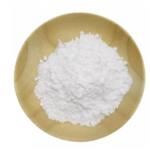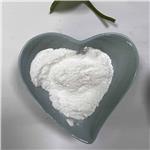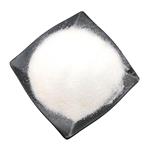- Metalaxyl
-

- $6540.00 / 1Tons
-
2024-04-24
- CAS:57837-19-1
- Min. Order: 1Tons
- Purity: 99.99%
- Supply Ability: 200Tons
- Metalaxyl
-

- $100.00 / 1kg
-
2023-08-31
- CAS:57837-19-1
- Min. Order: 1kg
- Purity: 99
- Supply Ability: 5000
- Metalaxyl
-

- $10.00 / 1kg
-
2023-07-19
- CAS:57837-19-1
- Min. Order: 1kg
- Purity: 99%
- Supply Ability: 1000tons
|
| | Metalaxyl Chemical Properties |
| Provider | Language |
|
Apron
| English |
| | Metalaxyl Usage And Synthesis |
| Description | Metalaxyl (chemical name: methyl N-(methoxyacetyl)-N-(2, 6-xylyl)-DL-alaninate) is an acylalanine fungicide of systemic function. It can be used for the treatment of pythium and phytophthora in many kinds of vegetables and peas. However, there are severe problem of drug resistance in current days. Metalaxyl exhibits strong activity against the mycelial growth of various sensitive fungi such as pythium splendens. The primary effect of metalaxyl seems to be related to its effect of interfering with the normal synthesis of RNA and DNA in sensitive fungi strains.
| | References | Kerkenaar, A. "On the antifungal mode of action of metalaxyl, an inhibitor of nucleic acid synthesis in Pythium splendens." Pesticide Biochemistry & Physiology 16.1(1981):1-13.
Fisher, David J., and A. L. Hayes. "Mode of action of the systemic fungicides furalaxyl, metalaxyl and ofurace." Pest Management Science13.3(2010):330-339.
Davidse, L. C., et al. "A comparison between the antifungal mode of action of metalaxyl, cyprofuram, benalaxyl and oxadixyl in phenylamide-sensitivity and -resistant strains. " Crop Protection 7.6(1988):347-355.
Metalaxyl showed the highest activity amongst the four fungicides against mycelial growth of sensitive strains on agar media.
| | Description | As an important fungicide group, acylanilides have a
longer history than triazoles. Metalaxyl (44) is one of
the most important fungicides in the group. It originates
from the class of herbicidal chloroacetanilides,
particularly metolachlor (45). Metolachlor, having a
chiral carbon center and a chiral axis, is composed
of four stereoisomers, the most herbicidally
active one of which is the (αR, 1S)-isomer (32). For
the stereoselective synthesis of this isomer, novel
iridium-ferrocenyldiphosphine catalysts for the enantioselective
hydrogenation of N-(2-ethyl-6-methylphenyl)-
N-(1�-methoxymethyl)-ethylidene-amine are reported. In
the most effective approach, the catalyst is generated
in situ from [Ir(cod)Cl]2(cod = cyclooctadiene) and the
ferrocenyldiphosphine ligand (R)-(S)-PPF-P(3,5-xyl)2 (46)
(33).When the substrate to catalyst ratio is 106, the
conversion is complete in 2 to 3 h, producing metolachlor
in optical yields over 80% (34). | | Chemical Properties | Combustible, white crystalline solid or
powder. Odorless. | | Chemical Properties | Pale Beige Solid | | Uses | Agricultural fungicide. Phenylamide fungicide or use in food crops, shrubs and turf. | | Uses | Systemic fungicide used to control a variety of diseases on a wide range of temperate,
subtropical and tropical crops. | | Uses | Metalaxyl is used for the control of air-borne pathogens by foliar
application and of soil-borne pathogens by soil application on a wide
range of crops. It is particularly useful against Oomycetes including
soil-borne Phytophthora diseases. | | Definition | ChEBI: Methyl N-(2,6-dimethylphenyl)-N-(methoxyacetyl)alaninate is an alanine derivative that is methyl alaninate in which one of the hydrogens attached to the nitrogen is substituted by a methoxyacetyl group, while the other is substituted by a 2,6-dimethylphenyl group. It is an alanine derivative, an aromatic amide, a carboxamide, an ether and a methyl ester. | | Hazard | Moderately toxic by ingestion. | | Agricultural Uses | Fungicide: Metalaxyl is used as a systemic fungicide on a variety of food and non-food crops including tobacco, turf
and conifers, and ornamentals. Used in combination with
fungicides of different mode of action as a foliar spray on tropical and subtropical crops; as a seed treatment to control downy mildew; and as a soil fumigant to control soilborne pathogens. | | Trade name | AGROX® PREMIERE; ALLEGIENCE®;
APRON®; CG 117®; CGA-48988®; CHLORAXYL®;
COTGUARD®; EPERON®; DELTA-COAT; FOLIO®
GOLD; GAUCHO®; KODIAK®; METALAXIL®;
METAXANIN®; PACE®; PREVAIL®; RAXIL® (tebu-
conazole + metalaxyl); RIDOMIL® GOLD/BRAVO®;
RIDOMIL®; RIDOMIL 2E®; SUBDUE® | | Pharmacology | In mycelium of Phytophthora
megasperma,metalaxyl affected primarily rRNA synthesis
(polymerase I), whereas mRNA was much less sensitive;
therefore, inhibition of rRNA synthesis is considered as
the primary site of action of PAFs (23).
The PAFs exhibit strong preventive and curative
activity. They affect especially hyphal growth (inside and
outside the plant tissue) as well as haustorium and spore
formation (15). Although not fully utilized for resistance
management reasons, PAFs also exhibit strong eradicative
and antisporulant activity in the disease cycle of target
pathogens. On the other hand, PAFs do not inhibit the
early stages in the disease cycle like zoospore release,
spore germination, and penetration of the host tissue (15).
Because spores contain many ribosomes to support early
growth stages, RNA synthesis is fully operating only
after spore germination; later development stages are
therefore most sensitive to PAFs (23). As a consequence
of RNA inhibition, the precursors of RNA synthesis (i.e.,
nucleoside triphosphates) are accumulated; they activate
β-1,3-glucansynthetases, which are involved in cell wall
formation (23). Metalaxyl-treated hyphae often produce
thicker cell walls than do untreated ones. | | Safety Profile | Moderately toxic by
ingestion. When heated to decomposition it
emits toxic fumes of NOx. | | Potential Exposure | Metalaxyl is phenylamide systemic
fungicide used on a variety of food and nonfood crops
including tobacco, turf and conifers, and ornamentals. Used
in combination with fungicides of different mode of action
as a foliar spray on tropical and subtropical crops; as a seed
treatment to control downy mildew; and as a soil fumigant
to control soil-borne pathogens. Banned for use in EU. | | Environmental Fate | Soil. Little information is available on the degradation of metalaxyl in soil; however,
Sharom and Edgington (1986) reported metalaxyl acid as a possible metabolite. Repeated
applications of metalaxyl decreases its persistence. Following an initial application, the
average half-life was 28 days. After repeated applications, the half-life decreased to 14
days (Bailey and Coffey, 1985).
Carsel et al. (1986) studied the persistence of metalaxyl in various soil types. The
application rate was 2.2 kg/ha. In a fine sand, metalaxyl concentrations at soil depths of
15, 20, 45 and 60 cm were 100, 150, 100 and 75 ppb, respectively, 55 days after
Plant. In plants, metalaxyl undergoes ring oxidation, methyl ester hydrolysis, ether
cleavage, ring methyl hydroxylation and N-dealkylation (Owen and Donzel, 1986). Metalaxyl
acid was identified as a hydrolysis product in both sunflower leaves an
In pigeon peas, metalaxyl may persist up to 12 days (Indira et al., 1981; Chaube et
al., 1984). | | Metabolic pathway | O-Demethylation is one of the major routes of
metalaxyl degradation in the plant cell suspension
culture. Although hydroxylation of methyl groups in the
phenyl ring predominates in both lettuce and grapes,
species differences are evident in grapes, whereas
N-dealkylation and aryl hydroxylation are less
important in lettuce. Two isomeric metabolites of
methyl hydroxylation and the hydroxylated metabolite
of the phenyl ring are identified as fungus metabolites.
By UV irradiation of metalaxyl in aqueous solution, two
rearrangement products of the N-acyl group to the
4-position on the phenyl ring are identified. | | Metabolism | The degradation pathways of pesticides are published
in the "FAO Plant Production and Protection Papers."
Because the degradation pathways are similar for all
PAF). In plants, metalaxyl is metabolized by
four types of phase I reaction to form eight metabolites; at
phase II, most of the metabolites are sugar-conjugated.
The types of reaction in phase I are hydroxylation at
the phenyl ring, oxidation of one of
the tolylic methyl groups (Formula d), hydrolysis of the
methyl ester (Formula e), and ether cleavage (Formula b).
In phases II and III, there is also a dealkylation of the
nitrogen (Formula l), in addition to the combination of the
above-mentioned reaction types forming the compounds
of Formulas f, h, and m. In mammals, following oral
administration, metalaxyl is rapidly absorbed and rapidly
and almost completely eliminated with urine and feces.
Metabolism proceeds via the same degradation pathways
as in plants, leading to products containing an oxidized
tolylic methyl group with or without the hydrolyzed ester function (Formulas d, h, and i, respectively) containing a
dealkylated nitrogen and a hydroxy group formed by ether
cleavage (Formula l via b or e/f), containing an oxalyl
function formed by ether cleavage followed by oxidation
of the generated alcohol (Formula c), and containing
the hydroxylated phenyl ring (Formula a). Residues in
tissues were generally low, and there was no evidence for
accumulation or retention of metalaxyl or its metabolites.
In soil, similar degradation products are found as in
plants and animals with the exception of three additional
products of Formulas k, n, and g. | | Shipping | UN3077 Environmentally hazardous substances,
solid, n.o.s., Hazard class: 9; Labels: 9-Miscellaneous hazardous
material, Technical Name Required. | | Degradation | Metalaxyl is very stable in neutral and acidic media at room temperature
and it is reasonably stable to aqueous photolysis. Its calculated
half-lives in buffers at 25 °C below pH 7 are <3 years and at pH 9, 12
weeks. Only at pH 11 was measurable hydrolysis seen (half-life 1.6
days) (Melkebeke et al., 1986). Thus environmental degradation can be
expected to be slow.
[14C-phenyl]Metalaxy1ir radiated in aqueous solution with UV light at
30 °C was degraded with a half-life of 2-3 days at four pH values between
2.8 and 8.8. Acetone (1%) accelerated the rate of decomposition. Two
rearrangement products (2 and 3) were isolated at pH 6.8; these accounted
for 3 and 6% of the radioactivity, respectively. Irradiation of 2 showed that
it was a precursor of compound 3 (Yao et al., 1989). Though these products
appear to be unusual, there is a precedent for such reactions and the
structures were determined by 1H and 13C NMR spectroscopy.
Decomposition under simulated sunlight was slower with a half-life of
297 days (Pirisi et al., 1996). Amide bond cleavage and N-dealkylation to
compounds 4 and 5 was reported. The dimethylaniline (6) was a putative
product but a separate experiment showed that it was degraded at a
higher rate than the parent and so was not observed from metalaxyl. The
products are shown in Scheme 1. | | Toxicity evaluation | If used according to label recommendations, PAFs
are considered to be safe to humans, animals, and
the environment. The active ingredients
represent only low-to-moderate acute oral and dermal
hazard to rats, mice, and rabbits. The compounds do not
exhibit mutagenic, oncogenic, and teratogenic hazards. No
or only weak (furalaxyl, ofurace) skin irritant potential
exists in rabbits and no skin sensitization is present in
guinea pigs, whereas some compounds are weak to serious
eye irritants in rabbits (except benalaxyl and oxadixyl). In long-term toxicity studies, the "no-observableeffect
level" (NOEL) in rats is 2.5 mg/kg body weight/day
for metalaxyl, metalaxyl-M, and ofurace; 5 mg/kg for
benalaxyl; and 11 mg/kg for oxadixyl, whereas in dogs,
the NOEL is 8.0 mg/kg body weight/day for metalaxyl
and metalaxyl-M, 7 mg/kg for benalaxyl, and 12 mg/kg for
oxadixyl. Using a safety factor of 100, the "acceptable daily intake" (ADI) for PAFs ranges from 0.025 to 0.11 mg/kg. The PAFs are unlikely to pose any toxicological
risk to birds (bobwhite quail, mallard ducks), fish (rainbow
trout, carp), honeybees, earthworms, Daphnia, and algae.
The observed LD50 (LC, EC) values are very favorable for
all PAFs; only benalaxyl shows lower figures in respect to
earthworm, Daphnia, and algae. | | Incompatibilities | Incompatible with alkaline materials,
strong acids, oxidizers (chlorates, nitrates, peroxides, permanganates,
perchlorates, chlorine, bromine, fluorine, etc.);
contact may cause fires or explosions. Compounds of the
carboxyl group react with all bases, both inorganic and
organic (i.e., amines) releasing substantial heat, water and a
salt that may be harmful. Incompatible with arsenic compounds
(releases hydrogen cyanide gas), diazo compounds,
dithiocarbamates, isocyanates, mercaptans, nitrides, and
sulfides (releasing heat, toxic, and possibly flammable
gases), thiosulfates and dithionites (releasing hydrogen sulfate
and oxides of sulfur). | | Waste Disposal | Small amounts may be
destroyed by alkaline hydrolysis. Admixture with alkali
can be followed by soil burial. Larger quantities can be
disposed of by incineration in admixture with acetone or
xylene and using effluent gas scrubbing. Do not reuse
empty container; proper disposal required. |
| | Metalaxyl Preparation Products And Raw materials |
|